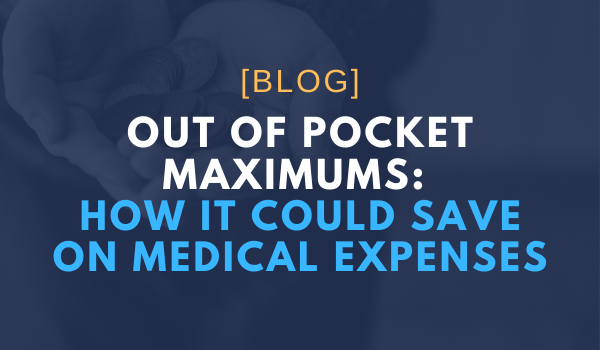The healthcare system in the United States can be confusing. To get the most out of your healthcare benefits, you need to understand the terms used by insurance companies, the government, health plans, and healthcare providers. That way, you can make better decisions and ultimately receive better care.
Health Insurance Terms
Here is a list of health insurance terms that you need to know:
Advance Premium Tax Credit – A tax credit provided by the Affordable Care Act to help you afford health coverage purchased through the Health Insurance Marketplace. You can use the tax credit in advance to lower your monthly premium costs. If you qualify, you may choose how much advance credit to apply to your premiums each month, up to a maximum amount. If the tax credits that you use during the year are less than the credit to which you are entitled, you’ll get the difference as a refundable credit when you file your federal income tax return. If you use more tax credits than the amount to which you are entitled, then you must repay the excess with your tax return. This is sometimes also called the premium tax credit.
Affordable Care Act (ACA) – The comprehensive health care reform law enacted in March 2010. The law was enacted in two parts: The Patient Protection and Affordable Care Act was signed into law on March 23, 2010 and was amended by the Health Care and Education Reconciliation Act on March 30, 2010. The name “Affordable Care Act” is used to refer to the final, amended version of the law.
Ambulatory Care – Healthcare services that can be provided on an outpatient basis and do not require a hospital stay, such as those provided in a doctor’s office, clinic, or outpatient surgery centers.
Annual Limit – A cap on the benefits your insurance company will pay in a year while you’re enrolled in a particular health insurance plan. These caps are sometimes placed on particular services, such as prescriptions or hospitalizations. Annual limits may be placed on the dollar amount of covered services or on the number of visits that will be covered for a particular service. After an annual limit is reached, you must pay all associated health care costs for the rest of the year. The ACA eliminated annual dollar limits beginning in 2014.
Assignment of Benefits – A document you sign that allows your hospital or doctor to bill your health insurance company directly for health care that you receive. Otherwise, you have to pay for treatment and get reimbursed by your insurance company.
Benefits – The amount of money payable by an insurance company to a claimant under the insurance policy.
Brand-Name Drugs – Prescription drugs sold by a drug company under a specific name or trademark and protected by a patent. Brand-name drugs may be available by prescription or over the counter.
Broker – An independent insurance agent who works with many insurance companies to find insurance policies for his or her clients.
Cafeteria Plans – A benefit plan under section 125 of the Internal Revenue Code adopted by an employer to help employees pay for certain expenses, such as life insurance, disability benefits, medical care, and childcare, with pre-tax dollars. Employers select the benefits that the plan will offer (only certain benefits can be provided), and employees use pre-tax dollars to pay for the benefits they want. Certain types of plans also permit employer contributions. Cafeteria plans are also known as flexible spending accounts or IRS 125 Plans.
Capitation – A set dollar limit that a health maintenance organization (HMO) pays to your primary care physician for providing medical treatment to you and your dependents. The fee is usually paid to the physician monthly. The physician gets no more or less than this set fee, no matter how much or how little you use his or her services.
Case Management – A technique that insurance companies and HMOs use to ensure that individuals receive appropriate, timely, and reasonable healthcare services.
Children’s Health Insurance Program (CHIP) – A government insurance program jointly funded by state and federal governments that provides health coverage to children and, in some states, pregnant women, in families that earn too much income to qualify for Medicaid but can’t afford to purchase private health insurance coverage.
Claim – A request by an individual (or his or her provider) to the insurance company to pay for services obtained.
Coinsurance – The amount that a patient is required to pay for healthcare services usually expressed as a percentage of the total cost. Coinsurance does not come into play until after a patient’s deductible has been met. In a typical arrangement, a patient pays 20% of the charges while the health plan pays 80%.
Consolidated Omnibus Budget Reconciliation Act (COBRA) – A federal law that may allow you to temporarily keep health coverage after your employment ends, you lose coverage as a dependent of the covered employee, or another qualifying event.
Copayment – The amount that a patient is required to pay for healthcare services at the time that services are provided. Copayments are usually a set dollar amount (such as $20 per office visit), rather than a percentage of the charges.
Deductible – A set dollar amount that a person must pay before insurance coverage for medical expenses can begin. Deductibles are usually charged on an annual basis.
Denial of Claim – Refusal by an insurance company to pay the cost of healthcare services provided to a patient.
Dental Insurance – Insurance that helps pay for dental care and usually includes regular checkups, cleanings, X-rays, and certain services required to promote general dental health. Some plans will provide broader coverage than others, and some will require a greater financial contribution from you when services are rendered. Some plans may also provide coverage for certain types of oral surgery, dental implants, or orthodontia.
Dependent – A person who can be covered under another person’s health plan. The “dependent” is defined in section 152 of the Internal Revenue Code.
Employee Assistance Program (EAP) – Mental health counseling services that are sometimes offered by insurance companies or employers. Typically, individuals or employers do not have to pay directly for EAP services provided.
Essential Health Benefits – A set of health care service categories that must be covered by certain plans.
Exclusions and Limitations – Specific conditions or circumstances for which an insurance policy or plan will not provide coverage (exclusions), or for which coverage is specifically limited (limitations).
Exclusive Provider Organization (EPO) – An Exclusive Provider Organization is a healthcare plan that only pays for health care provided by doctors, specialists, or hospitals in the plan’s network. There is usually an exception for emergency care.
Fee-For-Service Plans (FFS) – A Fee-For-Service Plan does not require that you go to an in-network provider. You can go to any doctor that you want. An FFS plan does not negotiate discounts with a provider network, so it is more expensive than other types of plans. However, it provides the greatest flexibility.
Flexible Spending Account (FSA) – An individual arrangement set up through employers to pay for many out-of-pocket medical expenses with tax-free dollars. The FSA account holder sets aside a pre-tax dollar amount for the year and can use the funds to pay medical expenses. Unused FSA funds may be forfeited, depending on the plan provisions. For more information on FSAs, read our previous blog here.
Generic Drugs – A prescription drug that has the same active-ingredient formula as a brand-name drug. Generic drugs usually cost less than brand-name drugs. The Food and Drug Administration (FDA) rates these drugs to be as safe and effective as brand-name drugs.
Grandfathered Health Plan – A group health plan that was created—or an individual health insurance policy that was purchased—on or before March 23, 2010, and is exempt from many, but not all, provisions of the ACA.
Group Health Plan – A health plan offered by an employer or employee organization that provides health coverage to a large group of people at a discounted rate.
Health Insurance – A contract that requires your health insurer to pay some or all of your health care costs in exchange for a premium.
Health Insurance Marketplace (Marketplace) – A state or federal resource where individuals, families, and small businesses can shop for health insurance plans based on costs, benefits, and other important features, and enroll in coverage. Individuals who enroll in a health insurance plan through the Marketplace may be eligible for Advance Premium Tax Credits and other assistance in paying for coverage. A Health Insurance Marketplace is also known as an Exchange.
Health Maintenance Organization (HMO) – Prepaid or capitated healthcare plans in which individuals pay a small monthly fee to be a member of the HMO, as well as small fees or copayments for specified health care services. Services are provided by physicians and allied health care personnel who are employed by or under contract with the HMO. HMOs are available to both individuals and employer groups.
Health Reimbursement Arrangement (HRA) – A Health Reimbursement Arrangement is an employer-funded account that an employee can use to pay for qualified medical expenses on a tax-free basis. Unused amounts may be rolled over to be used in subsequent years. Unlike HSAs, only the employer can fund an HRA. The employer sets up the HRA, determines the amount of money available in each employee’s HRA for the coverage period and establishes the types of expenses the funds can be used for.
Health Savings Account (HSA) – A Health Savings Account is a savings account that employees enrolled in a High Deductible Health Plan can establish. An employee makes pre-tax contributions to their HAS, typically through payroll deductions. While employers may also contribute to an HAS, the amounts are limited. Funds in an HAS must be used to pay for qualified medical expenses; there is a heavy tax penalty for using HSA funds for non-qualified expenses. Funds roll over year-to-year if you don’t spend them and can accumulate a significant balance. There is a limit to how much money can be put into an HSA every year, but no cap on how much money can be in the account. To learn more about HSAs, click here to read this blog.
High Deductible Health Plan (HDHP) – A High Deductible Health Plan is an employer-sponsored plan that has higher deductibles than traditional insurance plans. Each year, the IRS sets the minimum deductibles for an HDHP. Premiums for an HDHP are generally lower than premiums for a traditional plan. Employees enrolled in an HDHP can also have an HAS.
Independent Practice Association (IPA) – A group of independent practicing physicians who band together for the purpose of contracting with HMOs, PPOs, and insurance companies for their services.
Individual Mandate – The term “Individual Mandate” refers to a provision in the ACA that requires most individuals to obtain acceptable health insurance coverage for themselves and their family members or pay a penalty. Effective for plan years beginning Jan. 1, 2019, the penalty was reduced to $0.00, so the individual mandate no longer effectively exists. However, a few states (including Massachusetts, New Jersey, Vermont, California, Rhode Island, and the District of Columbia) have created their own individual mandates with penalties for noncompliance.
In-Network –The term “in-network” refers to a group of physicians, hospitals or other health care providers who contract with a health insurance plan, including a self-funded plan, toprovideservicestoitsmembers at discounted rates.
Lifetime Limit – The term “Lifetime Limit” means a dollar limit on the amount of medical expenses that an insurance company will pay during your lifetime. After the ACA, insurance companies can no longer set a Lifetime Limit on essential health benefits.
Long-Term Care Insurance – Insurance that covers the costs of providing nursing care, home health care services and custodial care for the aged and infirm.
Managed Care – A system of healthcare delivery that is characterized by arrangements with selected providers, ongoing quality control and utilization review programs, and financial incentives for members to use providers and procedures covered by the plan. An example of a managed care system is an HMO.
Maximum Benefit – The maximum dollar amount that an insurance company will pay for claims, either for a specific procedure or service or during a specified period.
Medicaid – A state-administered health insurance program for low-income families and children, pregnant women, the elderly, people with disabilities, and, in some states, other adults. The federal government provides a portion of the funding for Medicaid and sets guidelines for the program. States also have a choice in how they design their programs, so Medicaid varies state by state and may have a different name in your state. Click here to learn more about Medicaid.
Medical Loss Ratio (MLR) – A basic financial measurement created by the ACA to encourage health insurance companies to provide value to covered insureds. The term refers to the percentage of premium dollars that an insurance company spends on medical care, as opposed to administrative expenses and profit. For example, if an insurance company uses 80 cents out of every premium dollar to pay medical claims, it has an MLR of 80%.
Medically Necessary – The term “medically necessary” is used by insurance companies to limit the type of care that they will pay for. Care that is “medically necessary” is required to diagnose and treat a medical condition, injury, illness, disease or symptoms. It is used to distinguish treatment that may be desirable but does not impact a person’s medical health, such as elective cosmetic surgery.
Medicare – A federal health insurance program for people who are age 65 or older and for certain younger people with disabilities. It also covers people with End-Stage Renal Disease (ERSD)—permanent kidney failure requiring dialysis or a transplant.
Medicare Part D – Medicare Part D is the part of Medicare that provides insurance coverage for prescription drugs. Medicare Part D is available to anyone with Medicare. A person can also get prescription drug coverage through a Medicare Advantage Plan, which is insurance companies and other private companies approved by Medicare.
Minimum Essential Coverage – The term “minimum essential coverage” refers to the type of coverage that you needed in order to avoid the penalty the ACA. However, the penalty for failure to obtain health insurance that provides “minimum essential coverage” has been eliminated. Therefore, this term no longer has any relevance.
Open Enrollment Period – A period, usually, but not always, occurring once per year when an employer’s employees may make changes to their health insurance and other benefit options. The term also applies to the annual period in which individuals may buy health insurance plans through the Marketplace.
Out-of-Network – The term “out-of-network” is the opposite of in-network. It refers to physicians, hospitals and other health care providers who have not contracted with a health insurance plan, including a self-funded plan, to provide care to the plan’s members at a discount. Some plans may not cover care from out-of-network providers. Care obtained from out-of-network providers will, in most cases, be more expensive than care from in-network providers.
Out-of-Pocket Maximum (OOPM) – The total amount paid each year by the member for the deductible, coinsurance, copayments, and other health care expenses, excluding the premium. After reaching the out-of-pocket maximum, the plan pays 100% of the allowable charges for covered services the rest of that calendar year.
Point-of-Service Plan (POS) – A Point-of-Service plan is a type of managed care plan. Unlike an HMO, it permits a patient to see either in-network or out-of-network providers. However, a patient will have to pay more when using an out-of-network provider.
Pre-Admission Certification – Before a person can be admitted to a hospital or inpatient facility, some health plans require the person to get the approval of a case manager or insurance company representative (usually a nurse). This helps a plan or insurance company avoid having to pay for care that is not medically necessary. Also called “precertification” or “pre-admission review.”
Pre-Existing Condition – Any medical condition that existed before the date that coverage under a new health plan or insurance policy is supposed to became effective. After the ACA, an insurance company can no longer deny coverage to a person with pre-existing conditions.
Preferred Provider Organization (PPO) – A PPO is a type of health plan that negotiates with a network of healthcare providers to provide health care to the plan’s members at discounted rates.
Premium – The amount that you pay to an insurance company for coverage.
Prescription Insurance – Insurance that helps pay for prescription drugs and medications. Prescription insurance is often offered as part a larger health insurance plan. However, stand-alone individual prescription insurance may be available for people who do not otherwise have prescription drug coverage or who have no health insurance. Eligibility for specific medications and the cost of insurance varies among health plans. Also known as drug coverage.
Preventive Care – Any medical checkup, test, immunization, or counseling service used to prevent chronic illnesses from occurring.
Primary Care Physician (PCP) – A health care professional who is responsible for monitoring an individual’s overall health care needs. Typically, a PCP serves as a gatekeeper for an individual’s medical care, referring him or her to specialists and admitting him or her to hospitals when needed.
Qualified Health Plan – An insurance plan that is certified by the Health Insurance Marketplace, provides essential health benefits, follows established limits on cost-sharing (like deductibles, copayments, and out-of-pocket maximum amounts), and meets other requirements.
Qualified Medical Expenses – The term “Qualified Medical Expenses” is defined in section 213(d) of the Internal Revenue Code as amounts “paid for the diagnosis, cure, mitigation, treatment, or prevention of disease, or for the purpose of affecting any structure or function of the body”. Qualified Medical Expenses are the types of expenses that may be deductible and may be paid from and FSA, HSA or HRA.
Reasonable and Customary Charges – The amount or range that a health plan or insurance company determines is commonly charged for health care within a specific geographic area. The reasonable and customary charges vary from insurance company to insurance company. If an insurance company determines that a provider’s fee for a particular type of care exceeds the reasonable and customary charge, the insurance company will not pay the provider’s full charge, and the patient may be responsible for the balance.
Self-Funded Health Plan – A health plan where the employer assumes responsibility for the cost of its employees’ health care. Typically, a third party provides administrative services to the plan. Also known as self-insured health plans. Click here to learn more about self-funded health plans.
Summary of Benefits and Coverage (SBC) – A description of the benefits provided by a health insurance plan and associated costs. An SBC helps you compare the benefits and costs of different plans.
TRICARE – A healthcare program for active-duty and retired uniformed services members and their families.
Vision Insurance – Insurance that covers specific eye care benefits defined in the policy. Vision insurance policies typically cover routine eye exams and other procedures, and provide specified dollar amounts or discounts for the purchase of eyeglasses and contact lenses. Some vision insurance policies also offer discounts on refractive surgery.
Waiting Period – The period during which your health plan does not provide coverage.
Waiver – A rider or amendment to a policy that restricts benefits by excluding certain medical conditions from coverage.
Wellness Program – A program intended to improve and promote health and fitness, usually offered through the workplace, although insurance plans can offer them directly to their enrollees. The program allows your employer or plan to offer you premium discounts, cash rewards, gym memberships and other incentives to participate. Some examples of wellness programs include programs to help you stop smoking, diabetes management programs, weight loss programs and preventive health screenings.
Conclusion
RMC Group provides health insurance and employee benefit packages to employers. We work closely with the business owners to understand their needs and desires for the business while creating packages that provide great coverage and are cost efficient. For a free review of your current employee benefit coverages or for questions about these health insurance terms, contact our office at 239-298-8210 or rmc@rmcgp.com.



